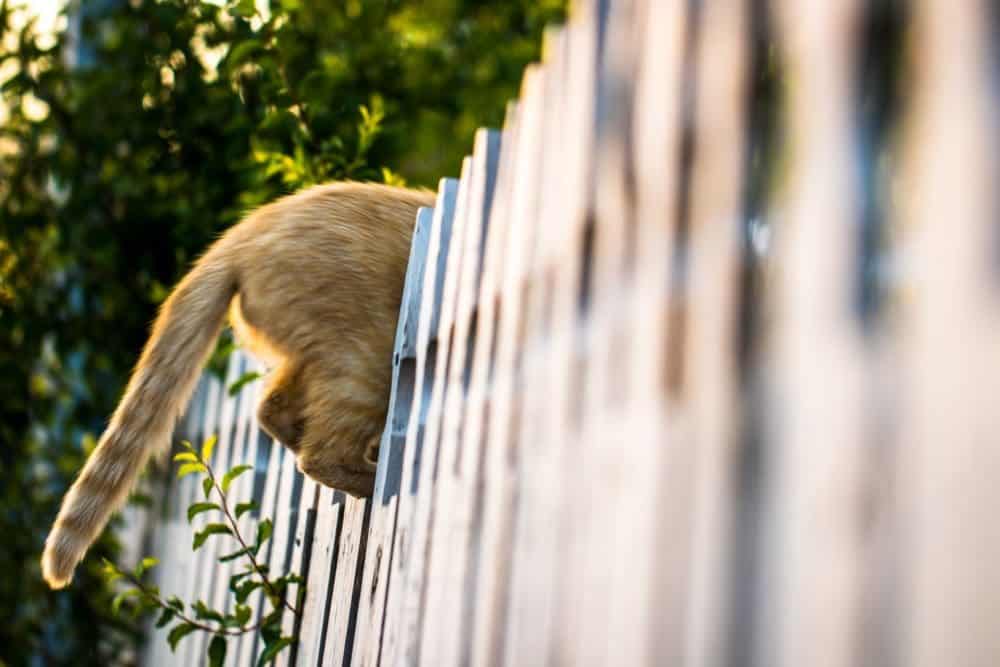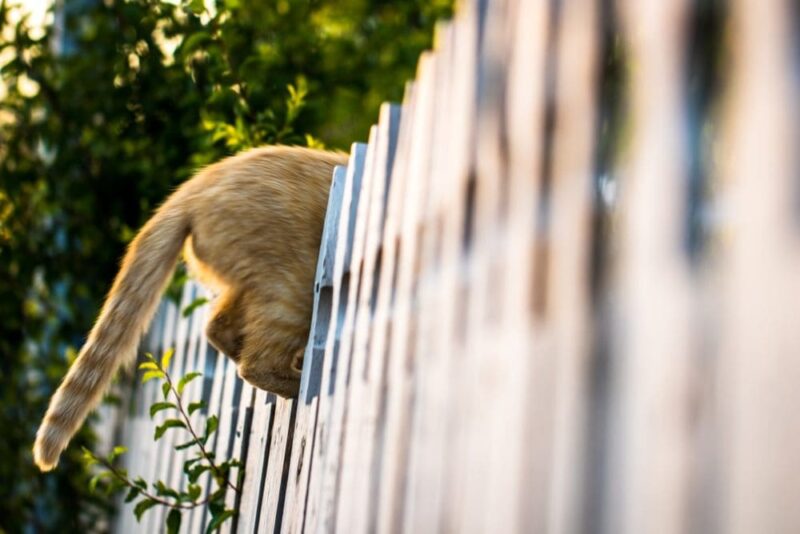Cats can be found in a wide variety of coat colors, patterns, and body types. The Cat Fancier’s Association officially recognizes 44 pedigreed cat breeds, while The International Cat Association currently recognizes 73 cat breeds for championship competition.
With all the varying features that can be found throughout the pedigrees, it’s easy to wonder which tail types are the most common among our beloved felines. While the breed standard is specific to each pedigree, we’ll go over some of the most common cat tail types below.
The 6 Most Common Cat Tail Types
1. Normal
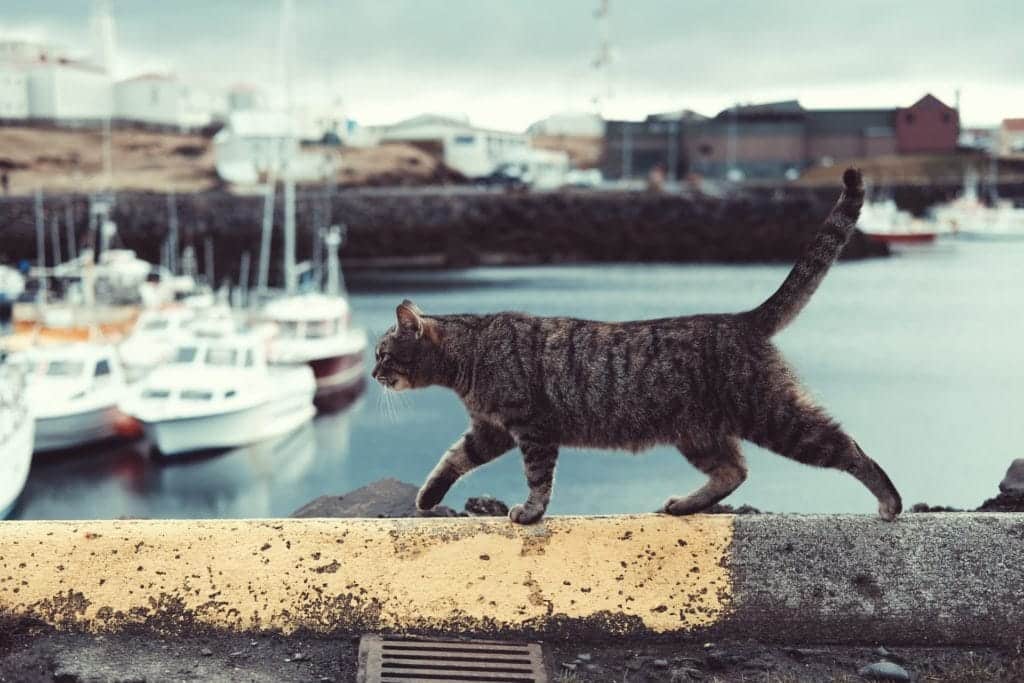
Most cats display a normal tail that is proportionate to their size. Normal tail types are thicker at the base, moderately proportioned, and taper at the end. This tail type is the more common tail variety and is seen in most registered purebred cat breeds and among most mixed breeds cats.
- Abyssinian
- American Shorthair
- Bengal
- Bombay
- Burmese
- Devon Rex
- Egyptian Mau
- Havana Brown
- Tonkinese
2. Full & Fluffy
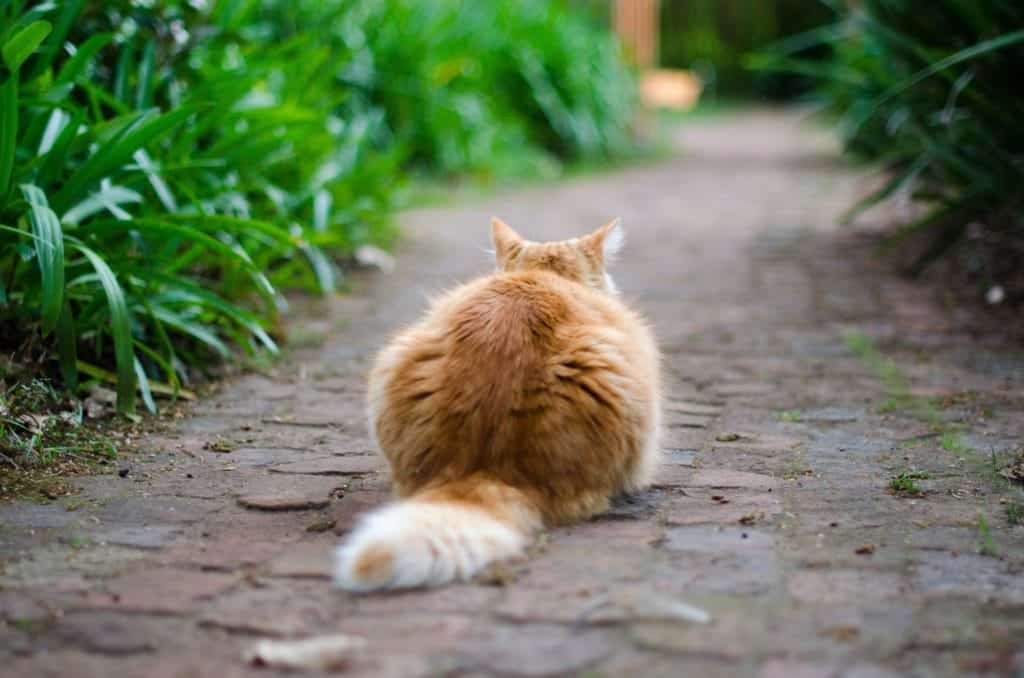
There’s nothing quite like a cat with a big bushy tail full of fluff. Some of the most popular breeds in the world come complete with a tail full of thick, medium-to-long fur. For the most part, the tail sizes are proportionate to their body, though it doesn’t seem that way due to the density.
- American Curl
- Birman
- LaPerm
- Maine Coon
- Norwegian Forest Cat
- Persian
- RagaMuffin
- Ragdoll
- Turkish Van
3. Long & Thin
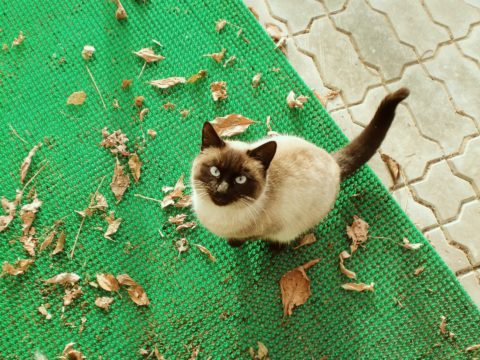
Some breeds sport a distinct, long, and thin tail that looks a bit long in proportion to their body. The long, thin tail type will vary in texture and density depending on the breed and their coat type, but the tail typically tapers at the very end. The most common breeds with a long, thin tail are the Siamese, the Russian Blue, and the Sphynx, though many mixed-breed cats display the trait.
- Balinese
- Burmilla
- Colorpoint Shorthair
- Cornish Rex
- Oriental
- Russian Blue
- Siamese
- Sphynx
4. Bobtail
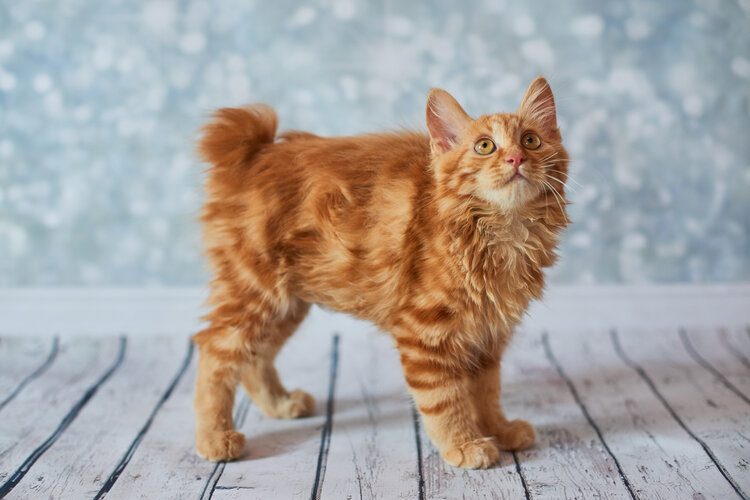
One tail type that is sure to stand out among the rest is the bobtail. It results from a genetic mutation and has been selectively bred within some of the most recognizable purebreds, such as the Manx and the American Bobtail.
Bobtails vary in length, and even kittens within the same litter can have varying tails from short and stubby, like a Bobcat, to a partial tail. You never know what you are going to get with this mutation.
- American Bobtail
- Japanese Bobtail
- Kurilian Bobtail
- Manx
- Pixie-Bob
5. Fox-like
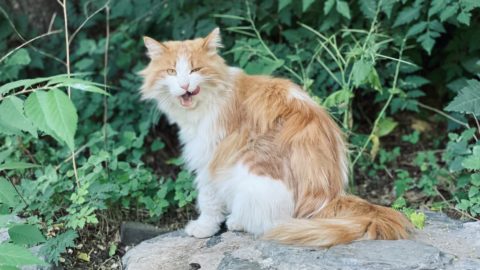
The fox-like tail is one of the rarest and is most notably present in the Somali and Turkish Angora breeds. While similar to the thick, fluffy tails we discussed previously, fox-like tails are much more pronounced and resemble that of a fox with overall density and bushiness. This tail type is rarely seen on your average mixed-breed cat.
- Somali
- Turkish Angora
6. Tailless
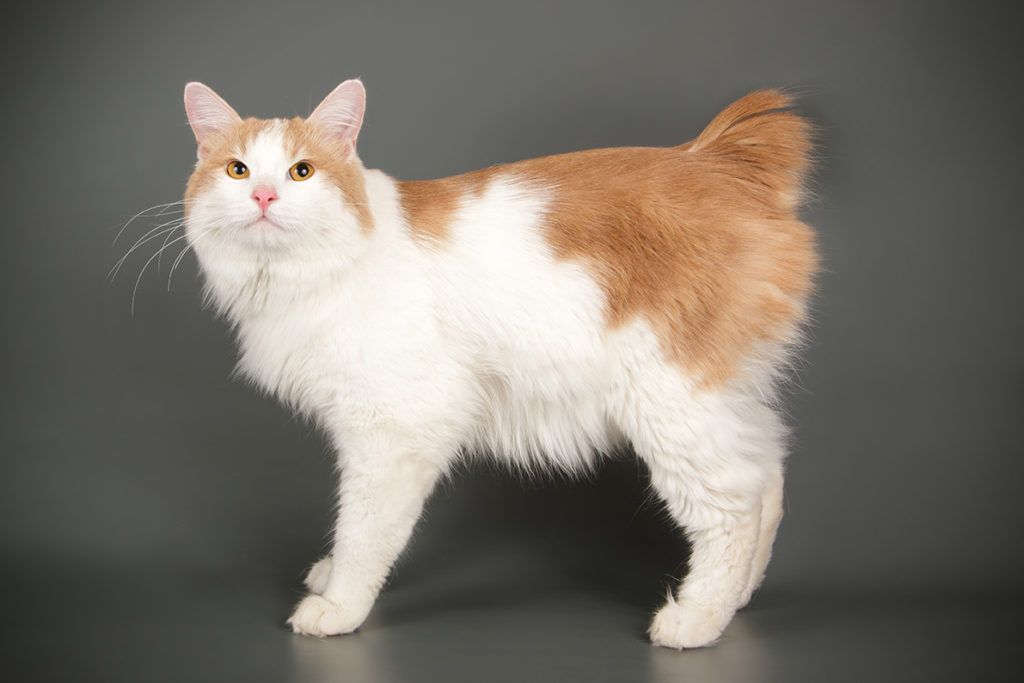
You may think that a tailless cat would fall into the category of the bobtail variety, but the complete lack of tail allows this tail type to stand alone. Taillessness is only observed in the Manx breed, though not all are tailless, and some come with the more well-known bobtail type with a small stub.
According to the Manx breed standard, a rise of bone at the end of the spine is allowed. Domesticated mixed-breed cats are more often observed with a tail stub rather than completely tailless.
Some Interesting Facts About Cat Tails
The interesting information about the hindmost part of your cat doesn’t end with the different tail types. Here are some additional fun and interesting facts about cats’ tails:
Tails Help With Balance & Communication
A cat’s tail plays a vital role in how they balance. The tail serves a cat by helping with balancing during the hunt when walking on narrow surfaces and jumping up and down from high places. Cats also use their tails as a means to communicate. One indicator of body language in cats is the position and appearance of the tail; it can help you tune into your cat’s current mood.
The Tailless Gene is Dominant
There is a lot of controversy surrounding the tailless gene seen in the Manx. It is dominant but requires selective breeding with a recessive gene to prevent lethal results. Having two copies of the dominant tailless gene can result in stillbirths and severe central nervous system and developmental issues.
Tail Injuries Can Result in Permanent Damage
The tail is full of several nerves that are protected by bony vertebrae. Even with the protection, an injury can still occur and result in temporary or permanent nerve damage. Tail pulling puts cats at serious risk of permanent damage and can cause damage to nerves further up the spine that control elimination.
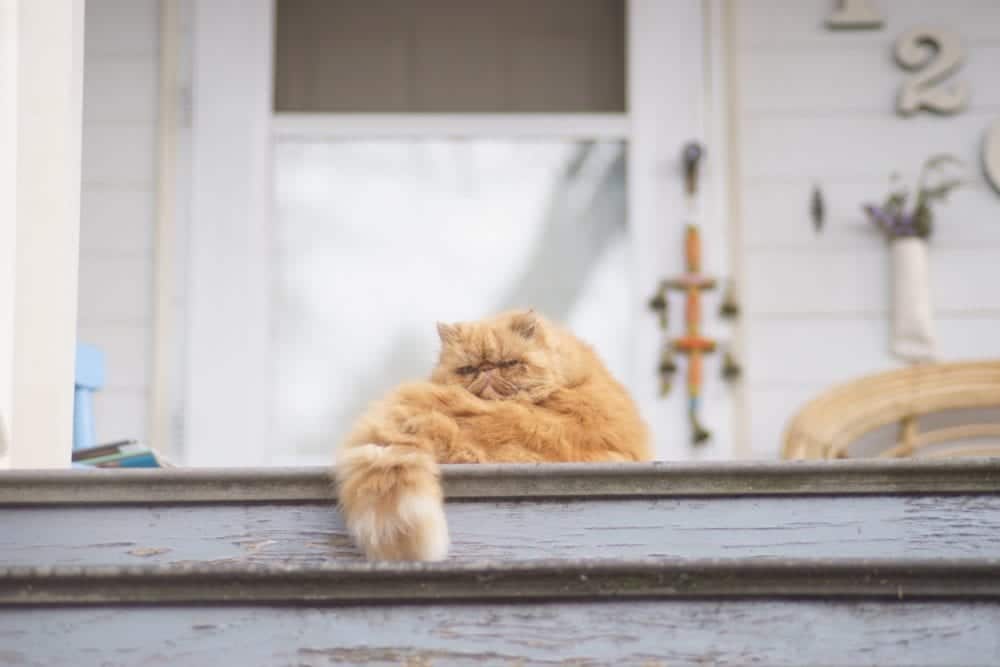
Cats Can Live Perfectly Normal Lives Without Tails
As mentioned, cats use their tail to help with balance and as a form of communication. Though it may come as no surprise, considering some cats are tailless, cats can live a perfectly normal life without a tail. If an injury were to result in the need for tail amputation, the cat would eventually adjust and be able to function just fine. In fact, the taillessness of the Manx does not affect their balance.
Domestic Cats Are the Only Felines That Hold the Tail Vertical When Walking
Unlike all other members of the Felidae family, domesticated cats are the only species that hold their tails vertically while they walk. Their wild counterparts hold their tails horizontally or tucked between their legs when in motion.
The Average Length of a Cat’s Tail is 12 Inches
While the average tail length for a domesticated cat is 12 inches, a Maine Coon named Cygnus Regulus Powers was featured in the Guinness Book of World Records for having the longest tail on a domesticated cat. Cygnus’ tail measured a whopping 17.58 inches!
Conclusion
While a cat’s tail size is typically relative to their body length and coat density, there are some exceptions to the rule. Whether short or bobtailed, long, thin, fluffy, or even missing entirely, it can be a real treat observing the different variations of tails that exist in both purebred and mixed-breed cats.
Featured Image: jason-leung, Unsplash
Contents
- The 6 Most Common Cat Tail Types
- Some Interesting Facts About Cat Tails
- Tails Help With Balance & Communication
- The Tailless Gene is Dominant
- Tail Injuries Can Result in Permanent Damage
- Cats Can Live Perfectly Normal Lives Without Tails
- Domestic Cats Are the Only Felines That Hold the Tail Vertical When Walking
- The Average Length of a Cat’s Tail is 12 Inches
- Conclusion

